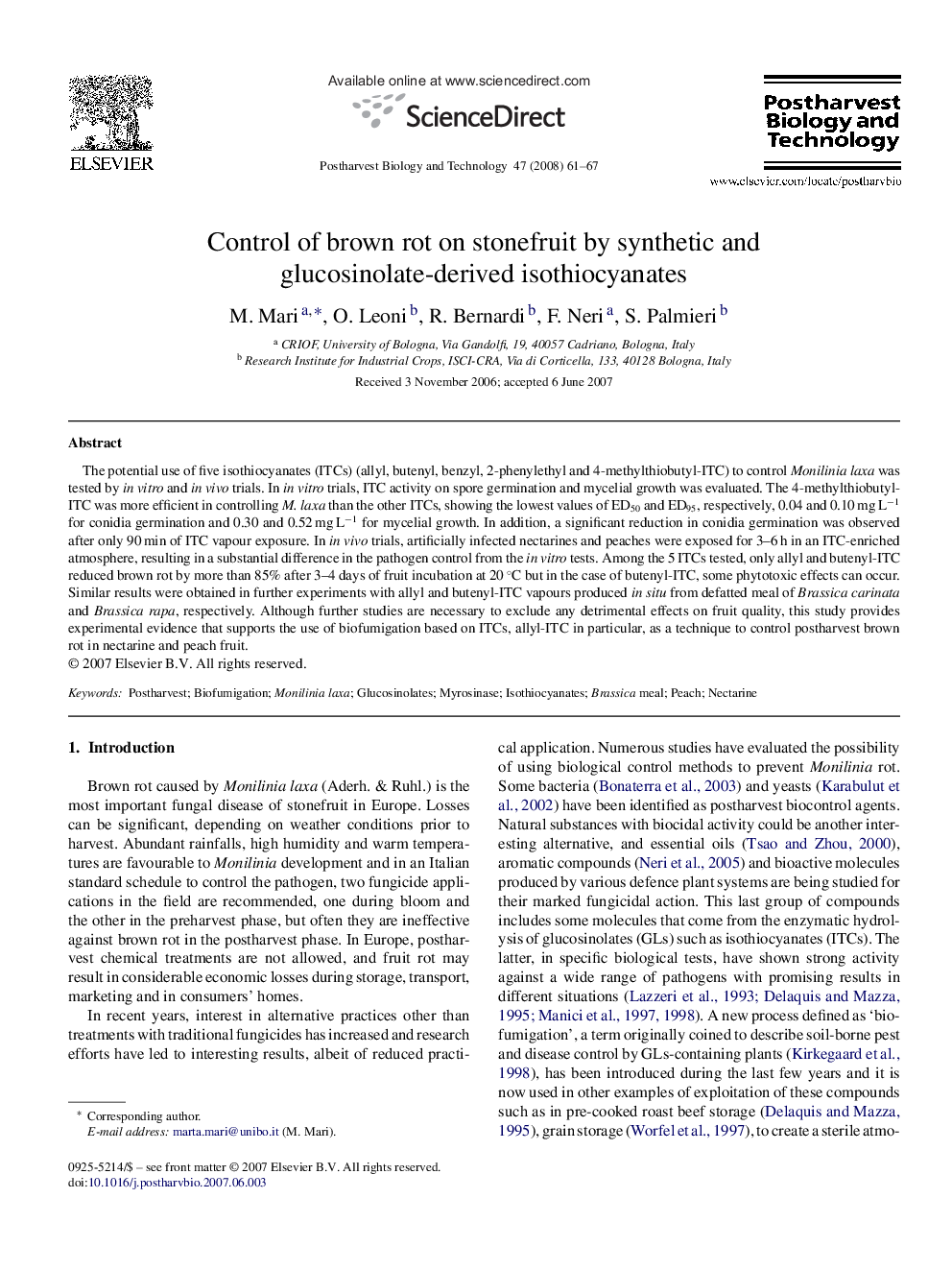| Article ID | Journal | Published Year | Pages | File Type |
|---|---|---|---|---|
| 4519523 | Postharvest Biology and Technology | 2008 | 7 Pages |
Abstract
The potential use of five isothiocyanates (ITCs) (allyl, butenyl, benzyl, 2-phenylethyl and 4-methylthiobutyl-ITC) to control Monilinia laxa was tested by in vitro and in vivo trials. In in vitro trials, ITC activity on spore germination and mycelial growth was evaluated. The 4-methylthiobutyl-ITC was more efficient in controlling M. laxa than the other ITCs, showing the lowest values of ED50 and ED95, respectively, 0.04 and 0.10 mg Lâ1 for conidia germination and 0.30 and 0.52 mg Lâ1 for mycelial growth. In addition, a significant reduction in conidia germination was observed after only 90 min of ITC vapour exposure. In in vivo trials, artificially infected nectarines and peaches were exposed for 3-6 h in an ITC-enriched atmosphere, resulting in a substantial difference in the pathogen control from the in vitro tests. Among the 5 ITCs tested, only allyl and butenyl-ITC reduced brown rot by more than 85% after 3-4 days of fruit incubation at 20 °C but in the case of butenyl-ITC, some phytotoxic effects can occur. Similar results were obtained in further experiments with allyl and butenyl-ITC vapours produced in situ from defatted meal of Brassica carinata and Brassica rapa, respectively. Although further studies are necessary to exclude any detrimental effects on fruit quality, this study provides experimental evidence that supports the use of biofumigation based on ITCs, allyl-ITC in particular, as a technique to control postharvest brown rot in nectarine and peach fruit.
Keywords
Related Topics
Life Sciences
Agricultural and Biological Sciences
Agronomy and Crop Science
Authors
M. Mari, O. Leoni, R. Bernardi, F. Neri, S. Palmieri,
